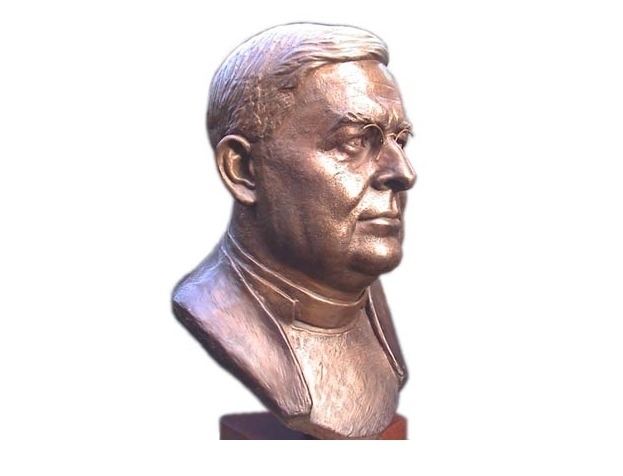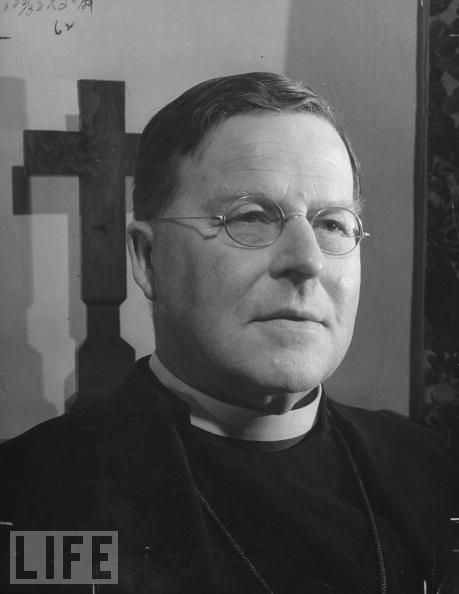Province Canterbury Term ended 26 October 1944 Name William Temple | Diocese Canterbury | |
 | ||
Appointed 1 April 1942 (nominated) Installed 17 April 1942 (confirmed) Books Readings in St John's go, Nature - man - and God, The hope of a new world, The faith and modern t, Church and Nation: The Bish Similar People Stephen Neill, Hassan Dehqani‑Tafti, William Wand, Cyril Garbett | ||
William Temple (15 October 1881 – 26 October 1944) was a bishop in the Church of England. He served as Bishop of Manchester (1921–29), Archbishop of York (1929–42) and Archbishop of Canterbury (1942–44).
Contents
- Early life
- Support for social reforms
- World War II
- Theological thought
- Death
- Namesakes
- Veneration
- Works
- References

A renowned teacher and preacher, Temple is perhaps best known for his 1942 book Christianity and Social Order, which set out an Anglican social theology and a vision for what would constitute a just post-war society. He is also noted for being one of the founders of the Council of Christians and Jews in 1942. He is the last Archbishop of Canterbury to have died while in office.
Early life

Temple was born in 1881 in Exeter, Devon, England, the second son of Frederick Temple (1821–1902), also Archbishop of Canterbury. From an early age, he suffered from gout and a cataract which left him blind in his right eye at age 40. He was educated at Rugby School and Balliol College, Oxford, where he obtained a double first in classics and served as president of the Oxford Union.
After graduation, he became fellow and lecturer in philosophy at Queen's College, Oxford from 1904 to 1910 and was ordained priest in 1909. Between 1910 and 1914 he was Headmaster of Repton School after which he returned to being a full-time cleric. He married Frances Anson in 1916. There were no children from the marriage. He was appointed Bishop of Manchester in 1921 and Archbishop of York in 1929. During his life, Temple wrote constantly and completed his largest philosophical work, Mens Creatrix (“The Creative Mind”) in 1917. In 1932–33, he gave the Gifford Lectures, published in 1934 as Gifford Lectures, Nature, Man, and God.
Support for social reforms
In 1942, Temple became Archbishop of Canterbury. In the same year he published Christianity and Social Order. The work attempted to marry faith and socialism and rapidly sold around 140,000 copies.
Temple defended the working-class movement and supported economic and social reforms. As the first President (1908–1924) of the Workers' Educational Association he was a member of the Labour Party from 1918 to 1925. He was chairman of an international and interdenominational Conference on Christian Politics, Economics and Citizenship held in 1924 and participated in the ecumenical movement. He was one of the Anglican delegates to the World Conference on Faith and Order held in Lausanne in 1927, and helped to prepare and chair the second World Conference Faith and Order in Edinburgh 1937. Temple was also influential in bringing together the various churches of the country to support the Education Act of 1944. His influence also led to the formation of the British Council of Churches and the World Council of Churches.
World War II
Against the background of persecution of Jewish people during World War II, Temple jointly founded with Chief Rabbi Joseph Hertz the Council of Christians and Jews to combat anti-Semitism and other forms of prejudice in Britain. In March 1943, Temple addressed the House of Lords, urging action to be taken on the atrocities being carried out by Nazi Germany. He said:
Temple drew criticism from his numerous Quaker connections, by writing an introduction to "Christ and Our Enemies" which did not condemn the Allied carpet bombing of Germany citing the fact that he was "not only non-pacifist but anti-pacifist".
In 1944, he published The Church Looks Forward (1944). He also publicly supported a negotiated peace, as opposed to the unconditional surrender that the Allied leaders were demanding.
Theological thought
Temple is noteworthy in being one of the first theologians to engage with the process theology and philosophy streams represented by thinkers such as Alfred N. Whitehead and Samuel Alexander, an approach most often deemed emergent evolution in his day (See George Garin, Theistic Evolution in a Sacramental Universe, Kinshasa, 1991). This attempt is most notable in his Gifford Lectures, mentioned above.
Death
Temple died at Westgate-on-Sea, Kent on 26 October 1944. He was cremated at Charing Crematorium, Kent. He was the first Primate of All England to be cremated and this had an immense effect upon the opinion of church people not only in his country, but also throughout the whole Anglican community. His ashes were buried under a large stone in the cloister garden of Canterbury Cathedral, close to his father's grave. There is a memorial to him at the parish church of St George in Bicknoller, Somerset where he spent his holidays from 1933 to 1944.
Namesakes
A house at Archbishop Tenison's C of E High School, Croydon is named after him.
Temple has a high school named after him, Archbishop Temple School in Fulwood, Preston.
The former William Temple College in Manchester, named after him, is continued through the William Temple Foundation as a research and resource centre for those developing discipleship and ministry in an urban/industrial society. (The college was founded at Hawarden, Flintshire, in 1947; moved to Rugby, Warwickshire, in 1954; moved to Manchester in 1971 and was renamed the William Temple Foundation.)
The Archbishop William Temple CoE Primary School in Hull was also named after him.
He has three churches named for him. One in Abbey Wood, London, one of three churches which make up the Thamesmead Team Ministry, which is part of the Church of England. Another is William Temple Parish Church, Wythenshawe - part of the Wythenshawe Team Ministry, Church of England Diocese of Manchester.
An international student residence in London, William Temple House, also bears his name.
An organisation which provides counselling and social services in Portland, Oregon, United States is named after Temple.
The school house named Temple's House at Bishop Stopford's School at Enfield is named in honour of Temple. It is known in full as "The House of William Temple, Head Master, Archbishop, and servant of God".
Veneration
Temple is honoured in the Calendar of the Church of England and other church members of the Anglican Communion on 6 November.
